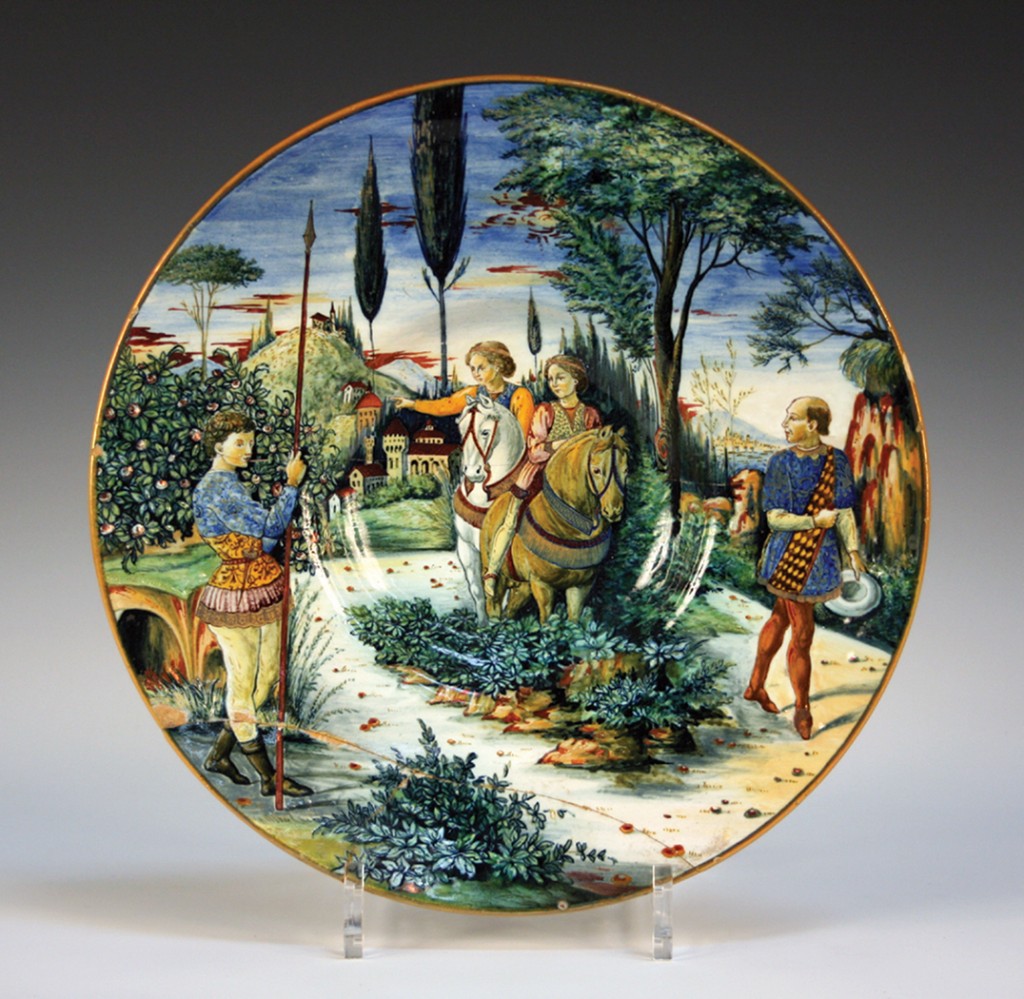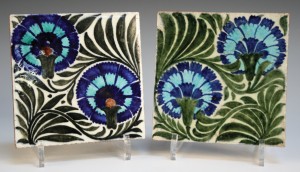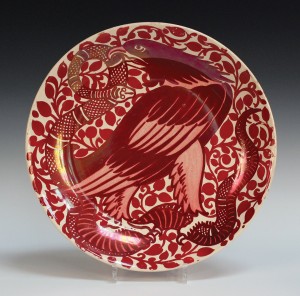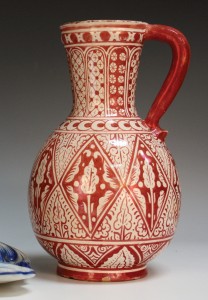

In the late 19th century the Italian manufacturer Cantagalli reinterpreted earlier Italian Renaissance maiolica pottery. These earthenware pieces found particular favour with English collectors. Perhaps this was in part due to the friendship between Ulisse Cantagalli (1839-1901) and England’s leading pottery designer, William de Morgan (1839-1917).

Ulisse and his brother Giuseppe produced these pieces from 1878 at their pottery near Florence. They also produced lustre wares inspired by Persian and Hispano-Moresque ceramics. The lustre wares were particularly admired by William de Morgan.
William de Morgan had a formative influence on the Arts and Crafts Movement. He trained at the Royal Academy of Arts. In the early 1860s he was associated with William Morris and the Pre-Raphaelite artists Edward Burne-Jones and Dante Gabriel Rossetti. He began to produce his famous tiles and pottery in London in 1869. In 1882 he moved his workshop to William Morris’s site at Merton Abbey on the River Wandle in south-west London, staying until 1888, when he left to set up a factory in Fulham.

Reacting against the Victorian fashion for 18th century style vases decorated with botanical studies, Chinese designs and the Gothic Revival, de Morgan found inspiration in the Persian and Hispano-Moresque. His tiles and vessels were decorated in lustre or the Persian palette of green, black and turquoise, as shown in the pair of tiles illustrated here. A master of carefully integrated patterns, his designs included animals, fishes, Grecian ships and, as in the case of the illustrated dish, birds and leaves. The subjects of these spirited motifs, although stylized, are clearly recognisable. They are rich in their effect. The Cantagalli ruby lustre jug once again shows the influence of the Persian. From 1892 onwards, William de Morgan spent his winters in Florence and worked with Cantagalli.
The rare late 19th century Cantagalli dish illustrated was decorated after Benozzo Gozzoli’s frescoes in the Palazzo Medici-Riccardi, Florence. Depicting the Journey of the Magi, these frescoes were painted on the chapel walls in the hot summer of 1459 and made brilliant by the artist’s use of gold and azure. The scenes provided the opportunity for Gozzoli to paint a pageant of Medici portraits, set in the Tuscan landscape. Cantagalli’s late 19th century interpretation of these paintings is also rich and vibrant in its use of coloured enamels.
How extraordinary that the Cantagalli factory’s fortunes should flourish in England, thanks to the shared inspiration, interests and friendship of two potters and the reputation and work of the Arts and Crafts potter William de Morgan.
By Revd. Rupert Toovey. Originally published on 23rd July 2014 in the West Sussex Gazette.
One thought on “William de Morgan and Ulisse Cantagalli”
Comments are closed.